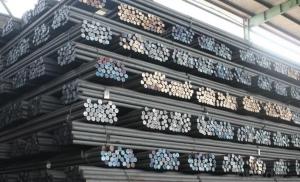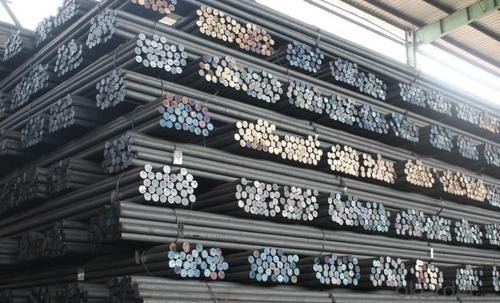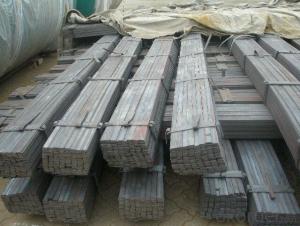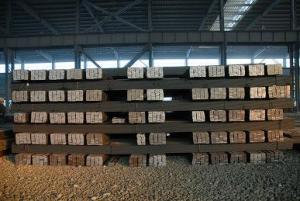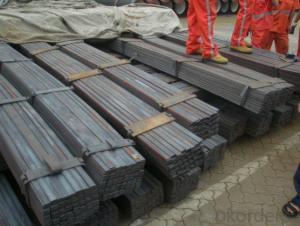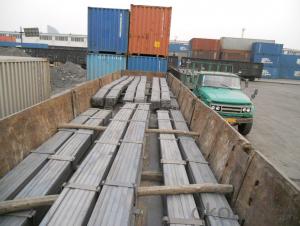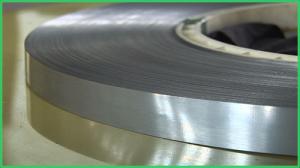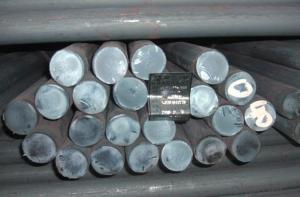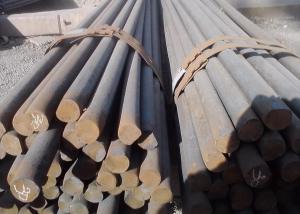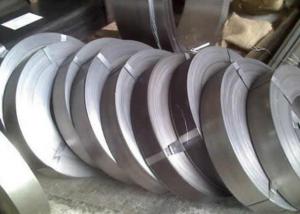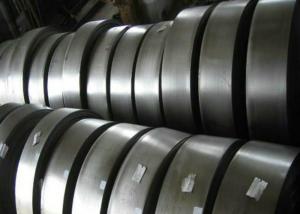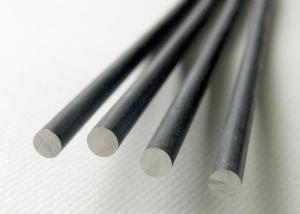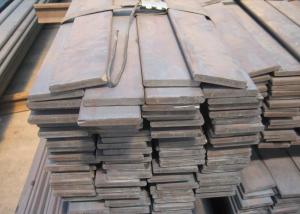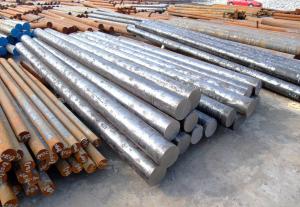51crv4 Hot Rolled Spring Steel Bar
- Loading Port:
- Tianjin
- Payment Terms:
- TT OR LC
- Min Order Qty:
- 25 m.t.
- Supply Capability:
- 50000 m.t./month
OKorder Service Pledge
OKorder Financial Service
You Might Also Like
Specification
51crv4 Hot Rolled Spring Steel Bar
Product Description:
1: Material: spring steel bar 51crv4.
2: Size: 90x10mm.
3: Length: 5800mm, or as your requirements.
4. Package: In bundles, packed with 5 clamps along the bundles ,including two clamps in 1.5 meters each head, three clamps in the middle of bundle. 20-25 ton for each 20' container, each bundle weight about 2-2.5 tons.
Pls don’t worry about our loading products into containers, we have the forklift truck and loading platform, our packing also meet transport on the ocean.
Specification:
Measurement | Thickness | Width | Length |
6mm~35mm | 40mm~150mm | 4m-8m (customized) | |
Edge(Cross Section) | round edge profile to DIN59145 | Square edge profile to DIN59146 | |
Bundle Weight | Around 2.0 MT | ||
Technique | Hot Rolled | ||
Surface | Grooved | Plain-smoothed | |
Quenchant | Oil/Water | ||
Temper Stressing | 480°C-560°C | ||
Quenching Temprature: | 800°C-1000°C | ||
OEM | Material Composition Offered by Customers | ||
Application | sup9/sup9a/sup10/55Cr3/50CrV4 | Automotive suspension springs | |
sup7/9260/30CrMnB/27CrMnB | Rotary tools Blades; Knife; Swords; | ||
Payment Term | 100% L/C at Sight. | 30% T/T Down Payment, Balance Against B/L Copy. | |
Packing | In bundles. Each bundle packed with 2 steel strips and 3 steel wires. | ||
Application:
WBQ Rolled steel round bar are widely used in machinery making, autombile making, railway, mine machinery, petoleum machinry, agricultural machinery and civil archtectue such as all kinds of shafts, screws, connecting rods, hardware tools, gears, standard parts, spanners fasteners, structural parts for automobile and agricultural machinery, outer and iner sleeves, rollers and balls for bearing making.
Product Show:
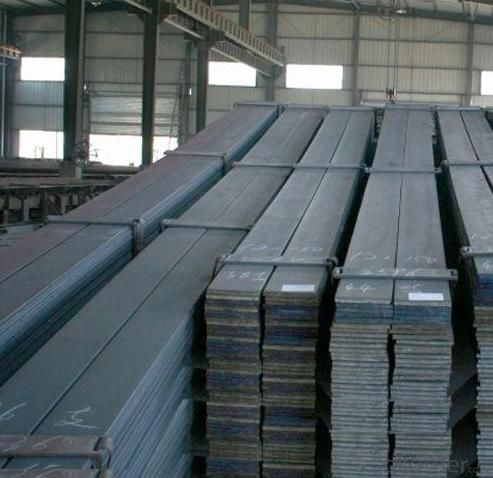
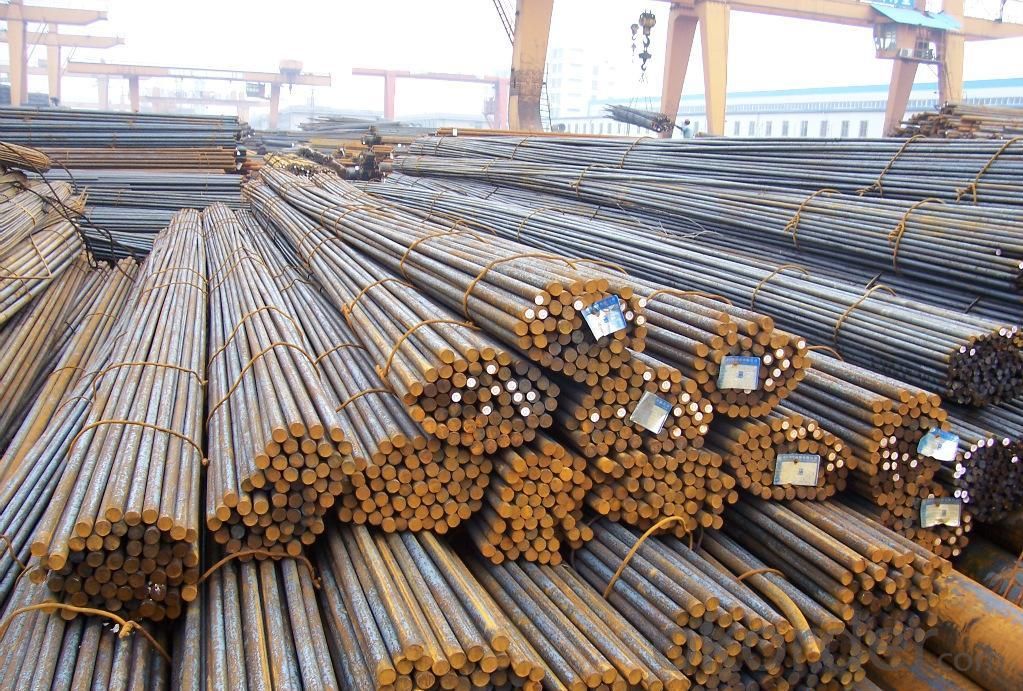
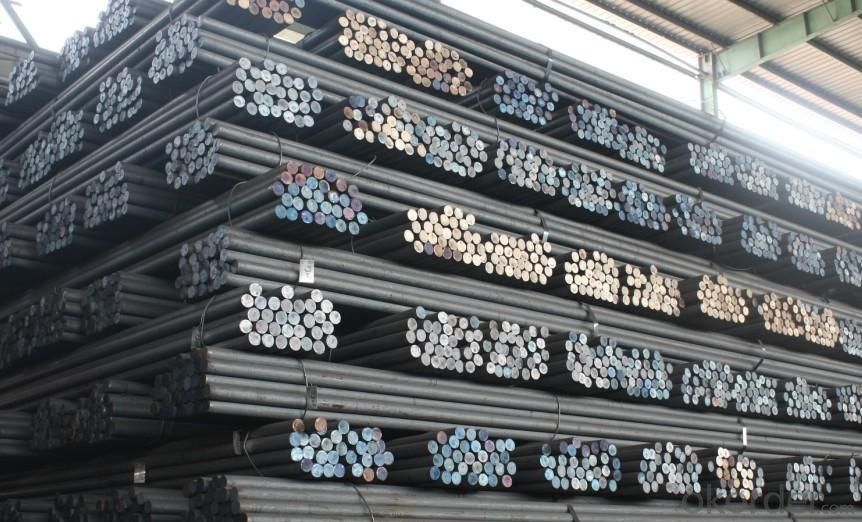
- Q: What are the non-destructive testing methods used for special steel?
- Some of the non-destructive testing methods used for special steel include ultrasonic testing, magnetic particle testing, liquid penetrant testing, and radiographic testing. These methods allow for the detection of defects, cracks, or other imperfections in the steel without causing any damage to the material itself.
- Q: What are the specific requirements for special steel used in the oil and gas sector?
- The specific requirements for special steel used in the oil and gas sector include high strength and corrosion resistance to withstand harsh environments, excellent fracture toughness to prevent failure under pressure, and resistance to hydrogen embrittlement. Additionally, it should have low temperature toughness for subzero conditions and be able to maintain its mechanical properties at elevated temperatures. The steel should also possess good weldability and be capable of withstanding cyclic loading and fatigue.
- Q: How does special steel perform in chemical resistance applications?
- Special steel performs exceptionally well in chemical resistance applications. It is specifically designed to withstand corrosion, oxidation, and other chemical reactions, making it highly resistant to various corrosive substances. Its unique composition and properties, such as high chromium and nickel content, provide excellent resistance to acids, alkalis, and other aggressive chemicals. This makes special steel an ideal choice for applications in industries such as chemical processing, oil and gas, pharmaceuticals, and food processing, where resistance to corrosion is crucial for long-term durability and safety.
- Q: How does special steel maintain its strength at different temperatures?
- Special steel maintains its strength at different temperatures due to its unique composition and heat treatment process. It is alloyed with elements like chromium, nickel, and molybdenum, which form stable compounds at high temperatures, preventing the steel from losing its strength. The heat treatment process involves carefully controlling the cooling rate, which further enhances the steel's microstructure and ensures its strength is retained even at extreme temperatures.
- Q: How does special steel contribute to the automotive aftermarket industry?
- Special steel plays a significant role in the automotive aftermarket industry by offering various advantages that contribute to the overall performance, durability, and safety of vehicles. Firstly, special steel is known for its exceptional strength and durability. This property allows automotive manufacturers and aftermarket suppliers to develop high-performance components and parts that can withstand extreme conditions and heavy usage. Components such as engine parts, suspension systems, and chassis components benefit from the superior strength of special steel, ensuring their longevity and reliability. Additionally, special steel offers excellent corrosion resistance, which is crucial for automotive components exposed to various weather conditions and road environments. By using corrosion-resistant steel, aftermarket suppliers can produce parts that are less prone to rust and degradation, ultimately enhancing the lifespan of vehicles and reducing the need for frequent replacements. Furthermore, special steel enables the production of lightweight components without compromising on strength. With the increasing demand for fuel efficiency and reduced emissions, lightweight materials are highly sought after in the automotive industry. By utilizing special steel, aftermarket suppliers can create lightweight parts that contribute to improved fuel economy and overall performance of vehicles. Moreover, special steel's versatility allows for the development of complex and intricate components, contributing to advancements in vehicle technology. From precision-engineered gears and shafts to specialized parts for electric vehicles, special steel can be tailored to meet specific automotive requirements, supporting the industry's continuous innovation. Lastly, special steel offers cost-effectiveness in the automotive aftermarket industry. Although the initial cost of special steel might be higher than conventional steel, its durability and longevity result in reduced maintenance and replacement costs over time. This benefit is particularly significant for aftermarket suppliers and vehicle owners, as it helps minimize expenses and ensures a higher return on investment. In conclusion, special steel plays a vital role in the automotive aftermarket industry by providing strength, durability, corrosion resistance, lightweight properties, versatility, and cost-effectiveness. These qualities contribute to the overall performance, safety, and longevity of vehicles, making special steel a crucial material in the development of high-quality aftermarket components and parts.
- Q: What are the properties of maraging steel?
- Maraging steel is a unique alloy known for its exceptional strength, toughness, and resistance to corrosion. It is characterized by its high yield strength, making it suitable for applications that require strong and durable materials. Maraging steel also exhibits excellent machinability and weldability, allowing for ease of fabrication and assembly. Additionally, it is known for its exceptional resistance to stress corrosion cracking, making it an ideal choice for critical components in aerospace, defense, and other high-performance industries.
- Q: How does special steel contribute to the textile industry?
- Special steel contributes to the textile industry by providing high-strength and durable components for textile machinery, such as looms, knitting machines, and textile processing equipment. The use of special steel in these machines ensures improved performance, precision, and longevity, thereby enhancing productivity and efficiency in textile manufacturing processes. Additionally, special steel's resistance to corrosion and wear helps maintain the quality and reliability of textile machinery, minimizing downtime and maintenance costs for manufacturers.
- Q: How does special steel contribute to improving product performance in corrosive environments?
- Special steel contributes to improving product performance in corrosive environments due to its unique properties and composition. Special steel is specifically designed to resist corrosion and maintain its structural integrity even when exposed to harsh conditions. It contains elements like chromium, nickel, and molybdenum that form a protective layer on the surface, preventing the metal from reacting with corrosive substances. This enhanced corrosion resistance ensures that products made from special steel have a longer lifespan, reduced maintenance requirements, and improved performance in corrosive environments.
- Q: What are the applications of high-speed steel?
- High-speed steel (HSS) finds numerous applications due to its exceptional combination of hardness, toughness, and heat resistance. It is extensively used in cutting tools, such as drills, end mills, and lathe tools, enabling efficient machining of various materials, including metals, plastics, and wood. HSS is also employed in forming tools, such as taps and dies, where it can withstand the high pressures and temperatures involved in metalworking processes. Additionally, HSS is utilized in saw blades, milling cutters, and gear cutters, enhancing their durability and performance. Its versatility and reliability make high-speed steel a crucial material in various industries, including manufacturing, automotive, aerospace, and construction.
- Q: Can special steel be used in the production of luxury goods?
- Yes, special steel can definitely be used in the production of luxury goods. Luxury goods often require high-quality materials to ensure durability, exclusivity, and overall premium quality. Special steels, such as stainless steel, alloy steel, or carbon steel, offer various desirable properties that make them suitable for luxury goods manufacturing. For instance, stainless steel is widely used in luxury watches, jewelry, and accessories due to its corrosion resistance, shiny appearance, and ability to withstand daily wear and tear. Additionally, certain alloy steels can provide exceptional strength and toughness, making them ideal for luxury car parts, high-end knives, or designer furniture. The use of special steel in luxury goods not only enhances their aesthetic appeal but also contributes to their longevity and value. These materials can be crafted into intricate designs, allowing manufacturers to create unique, one-of-a-kind products that cater to the discerning tastes of luxury consumers. Overall, special steel offers a wide range of qualities that are highly sought after in the production of luxury goods, making it a preferred choice among designers and manufacturers in this industry.
Send your message to us
51crv4 Hot Rolled Spring Steel Bar
- Loading Port:
- Tianjin
- Payment Terms:
- TT OR LC
- Min Order Qty:
- 25 m.t.
- Supply Capability:
- 50000 m.t./month
OKorder Service Pledge
OKorder Financial Service
Similar products
Hot products
Hot Searches
Related keywords
